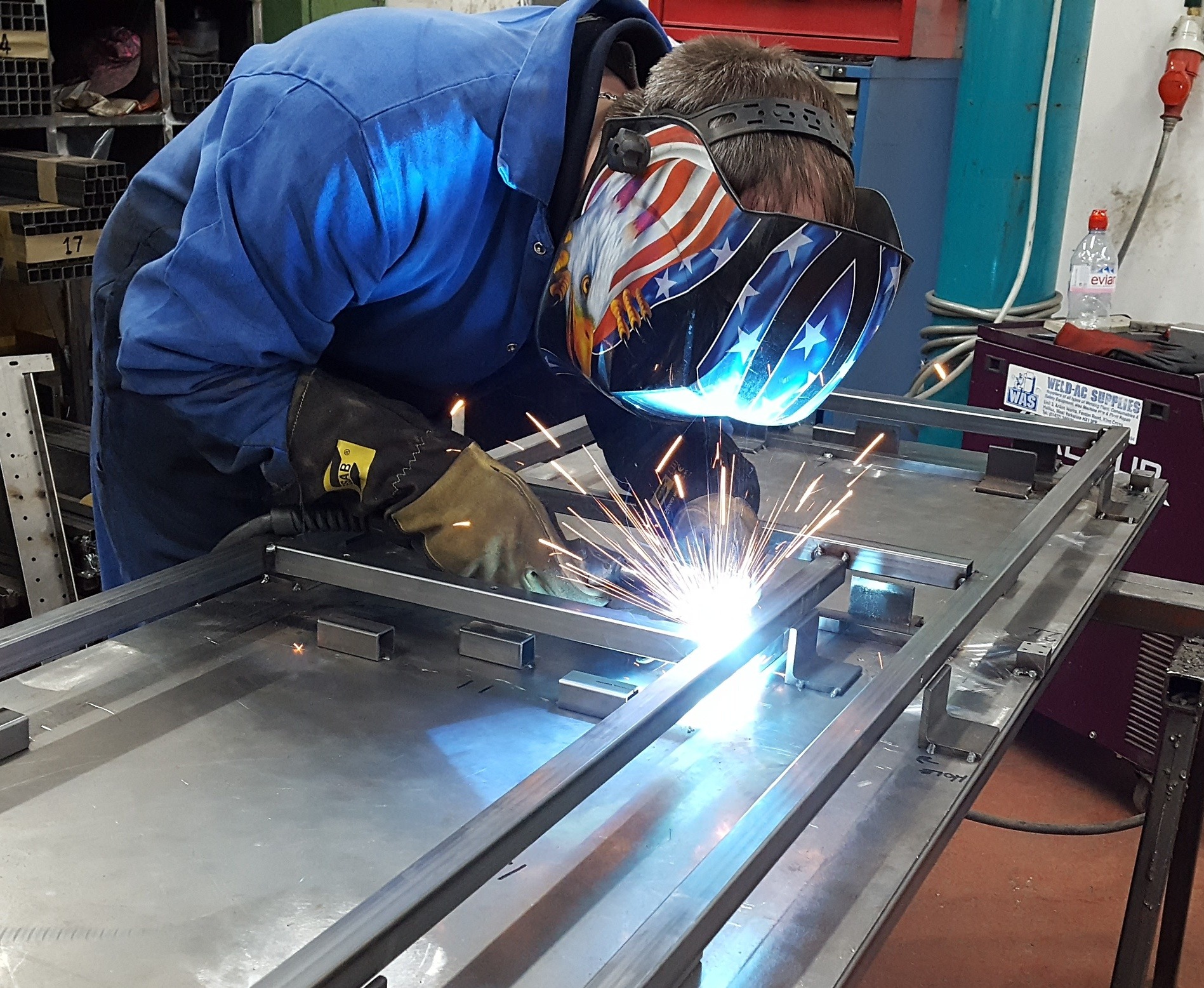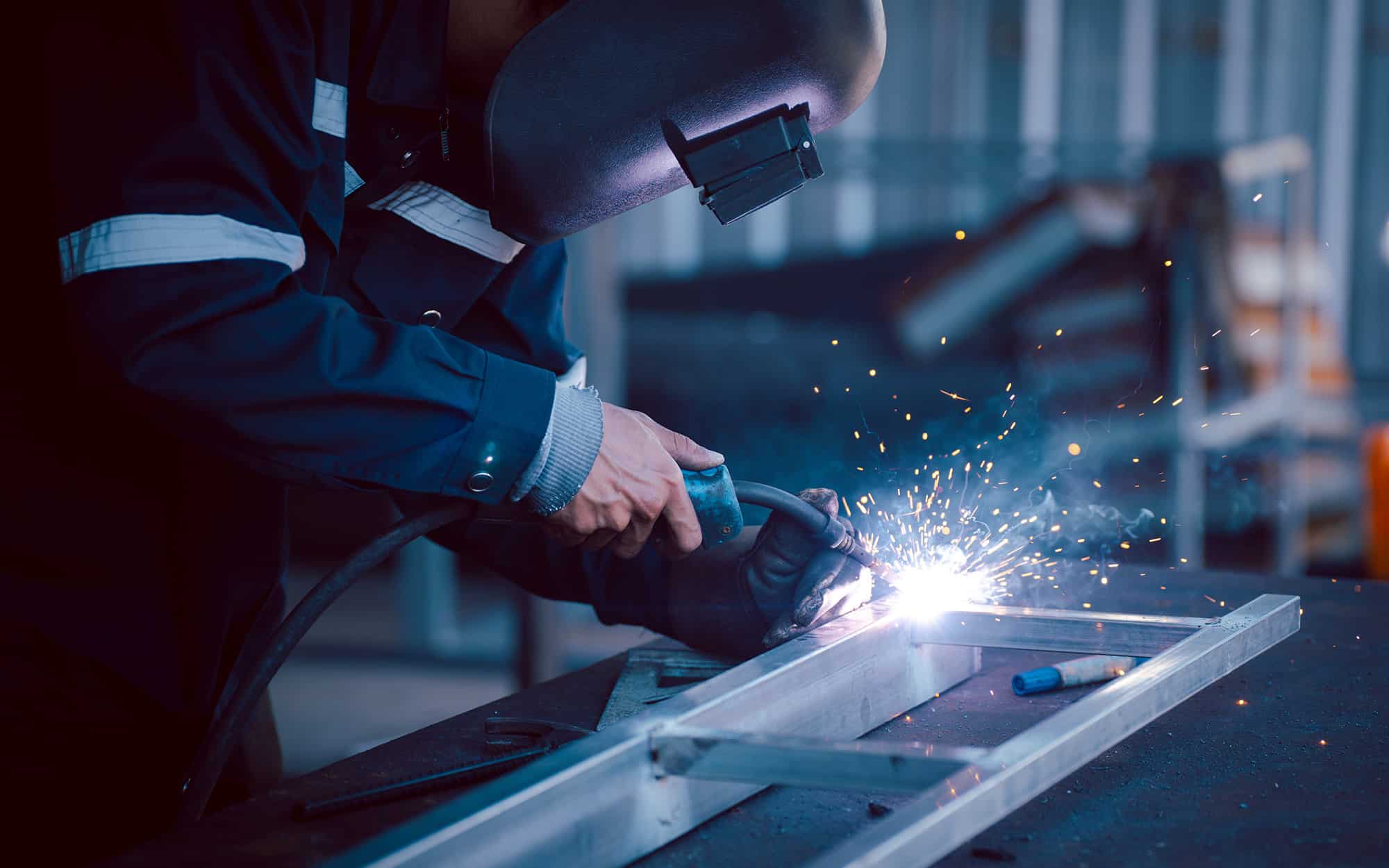Usual Welding Repair Service Issues and How to Address Them Successfully
Welding fixings often encounter a variety of problems that can threaten the integrity of the end product. Typical problems consist of insufficient infiltration, porosity, and imbalance, among others. Each issue offers special obstacles that need particular strategies for resolution. Recognizing these concerns is vital for welders intending to enhance their abilities and results. This conversation will certainly explore these common welding repair work concerns and effective approaches to resolve them.
Poor Infiltration
Inadequate penetration happens when the weld metal falls short to completely fuse with the base material, resulting in weak joints and possible architectural failings. This problem commonly originates from insufficient heat input, incorrect electrode angle, or incorrect welding rate. Welders might encounter insufficient penetration as a result of a mistake of the required parameters for a certain product thickness or kind. Additionally, contamination on the base material's surface can impede efficient bonding, aggravating the trouble. To deal with poor penetration, welders ought to guarantee proper setups on their devices and preserve a clean job surface area. Normal examination of welds is suggested to recognize any kind of deficiencies early, allowing for prompt improvements and the prevention of endangered structural honesty in welded settings up.
Porosity
Porosity is a common issue in welded joints that materializes as small gas bubbles trapped within the weld steel. This problem can jeopardize the stability of the weld, resulting in minimized stamina and potential failure under tension. Belgrade Fabrication. Porosity commonly arises from contamination, dampness, or incorrect welding strategies, which permit gases to run away into the molten weld pool. To resolve porosity, welders must assure proper surface preparation, preserve a tidy working atmosphere, and use suitable welding criteria. Additionally, choosing the ideal filler material and securing gas can mitigate gas entrapment. Normal inspection and testing of welds can assist determine porosity early, guaranteeing prompt restorative actions are taken, consequently preserving the top quality and integrity of the bonded structure
Misalignment
Imbalance in welding can occur from numerous variables, including inappropriate configuration and thermal growth. Recognizing the source is essential for efficient resolution. Several improvement methods are available to realign components and ensure architectural stability.
Sources of Imbalance
Welding imbalance often originates from a variety of underlying concerns that can compromise architectural integrity. One key cause is inappropriate fit-up of components prior to welding, which can lead to voids and unequal surfaces. Variants in thermal expansion throughout the welding procedure can additionally lead to distortion, specifically if the products being signed up with have various coefficients of expansion. In addition, inadequate securing and fixturing might fall short to hold components safely in area, bring about movement throughout welding. Improperly maintained devices, including welding makers and tools, might present inconsistencies in the weld grain, further adding to misalignment. Driver mistake, stemming from not enough training or experience, can likewise play a considerable role in creating misaligned welds.

Modification Strategies Readily Available
Dealing with imbalance properly calls for a combination of corrective techniques tailored to the certain issues handy. One typical approach is using jigs or components to hold components in the appropriate setting during welding, ensuring consistent placement. Additionally, pre-heating the products can help in reducing distortion and improve fit-up. For substantial imbalance, mechanical adjustment strategies, such as using hydraulic jacks or clamps, can be utilized to correct the setting before welding. Post-weld warmth treatment might likewise be required to eliminate stresses triggered by imbalance. Lastly, mindful evaluation and modification throughout the configuration stage can protect against imbalance issues from becoming significant troubles, promoting a smoother welding process and boosting overall architectural integrity.
Distortion
Distortion is a common difficulty in welding that can occur from numerous aspects, consisting of irregular heating and cooling. Understanding the sources of distortion is crucial for applying reliable avoidance techniques. Resolving this problem not just boosts structural stability however additionally enhances the overall top quality of the weld.
Root causes of Distortion
When based on the intense warm of welding, products usually go through changes that can lead to distortion. This phenomenon mostly develops from thermal development and tightening during the welding procedure. As the weld area warms up, the product broadens; upon cooling, it acquires, which can create interior stress and anxieties. Additionally, unequal heating throughout a workpiece can aggravate these anxieties, resulting in bending or bending. The type of product additionally plays a significant duty; steels with varying thermal conductivity and coefficients of expansion might react in different ways, bring about uncertain distortions. Additionally, bad joint style and poor fixturing can contribute to imbalance throughout welding, boosting the probability of distortion. Recognizing these causes is necessary for effective welding repair service and avoidance techniques.
Avoidance Techniques
Reliable avoidance methods for distortion throughout welding focus on managing heat input and guaranteeing appropriate joint layout. Preserving a consistent heat input helps to reduce thermal development and contraction, which can cause distortion. Making use of strategies such as pre-heating the workpiece can likewise decrease the temperature level gradient, advertising uniform home heating. Additionally, choosing ideal joint designs, such as T-joints or lap joints, can improve stability and reduce stress and anxiety concentrations. Carrying out correct fixturing to safeguard the workpieces in position even more aids in maintaining positioning throughout the welding procedure. Lastly, staggered welding series can disperse heat a lot more equally, preventing local distortion. By using these approaches, welders can considerably decrease the likelihood of distortion and improve the general high quality of their welds.
Fracturing
Breaking is a common problem run into in welding repairs, commonly resulting from numerous elements such as incorrect air conditioning rates, product selection, or insufficient joint prep work. The incident of cracks can greatly compromise about his the honesty of the weld, leading to prospective failures throughout procedure. To resolve this issue, welders have to first assess the origin creates, making sure that products work and properly chosen for the certain application. Furthermore, controlling the air conditioning rate during the welding procedure is micro welding essential; quick cooling can generate stress and result in breaking. Proper joint design and preparation additionally contribute to decreasing the threat. Executing these techniques can boost weld high quality and sturdiness, inevitably lowering the likelihood of fracturing in finished weldments.

Insufficient Blend
A significant problem in welding repair services is insufficient combination, which takes place when the weld metal does not appropriately bond with the base material or previous weld passes - Montana Mobile Welding and Repair. This defect can result in weaknesses in the joint, potentially endangering the honesty of the welded structure. Aspects adding to insufficient combination consist of inadequate heat input, improper welding method, and contamination of the surface areas being joined. To resolve this issue successfully, welders need to guarantee appropriate pre-weld cleaning and surface prep work, along with readjust their welding specifications to accomplish ample penetration and combination. Regular assessment throughout the welding procedure can also help determine insufficient fusion early, enabling prompt restorative actions to boost the overall top quality of the weld
Overheating
While welding repair services can improve structural integrity, overheating offers a significant difficulty that can cause product destruction. Too much warmth during welding can alter the mechanical homes of steels, resulting in reduced stamina, raised brittleness, and warping. This sensation is especially critical in high-stress applications where structural integrity is critical. Recognizing getting too hot can involve visual inspections for staining or distortion, as well as checking temperature level during the welding procedure. To alleviate the risks connected with overheating, welders need to employ suitable strategies, such as managing warm input, changing travel rate, and utilizing ideal filler products. In addition, implementing pre- and post-weld heat treatments can assist bring back material buildings and enhance the total high quality of the repair work, making certain lasting efficiency and safety and security.
Frequently Asked Inquiries
What Are the Usual Indications of a Welding Defect?

Exactly How Can I Check My Welds for Top quality?
To test welds for high quality, one can use visual evaluations, ultrasonic screening, and radiographic techniques. Each strategy guarantees architectural honesty, recognizes issues, and validates adherence to specified requirements, ultimately enhancing the dependability of the welded joints.
What Security Safety Measures Should I Take While Welding?
When welding, one must prioritize security by using suitable personal safety tools, ensuring correct air flow, safeguarding combustible products away, preserving a tidy work area, and understanding environments to avoid mishaps and injuries.
Can I Fix a Weld Without Renovating the Entire Joint?
Repairing a weld without redesigning the entire joint is feasible, relying on the damage (Montana Mobile Welding and Repair Welding). Methods such as grinding, including filler product, or using a welding procedure can properly resolve particular flaws while maintaining the surrounding framework
What Devices Are Essential for Effective Welding Repair Works?
Crucial devices for efficient welding repairs include a welding device, cable brush, mill, protective equipment, clamps, and filler products. Each tool plays a vital function in making certain top quality and security throughout the repair process. Porosity usually arises from contamination, dampness, or improper welding techniques, which allow gases to escape right into the liquified weld pool. Poorly conserved tools, consisting of welding machines and tools, may introduce disparities in the weld bead, more contributing to misalignment. When subjected to the extreme warmth of welding, products frequently go through changes that can lead to distortion. Cracking is a typical concern run into in welding fixings, frequently resulting from various aspects such as inappropriate cooling rates, product choice, or inadequate joint preparation. A considerable problem in welding repair services is insufficient blend, which takes place when the weld steel does not appropriately bond with the base material or previous weld passes.
Comments on “How temperature control can do for distortion prevention in Montana Mobile Welding and Repair Fabrication”